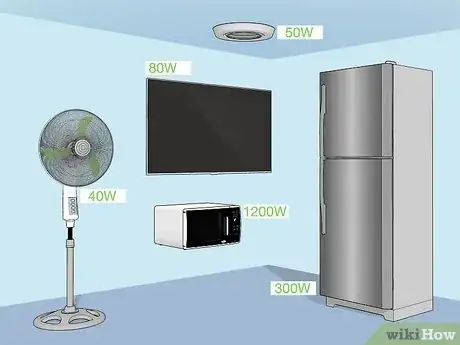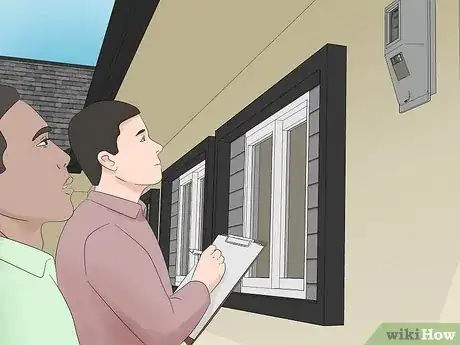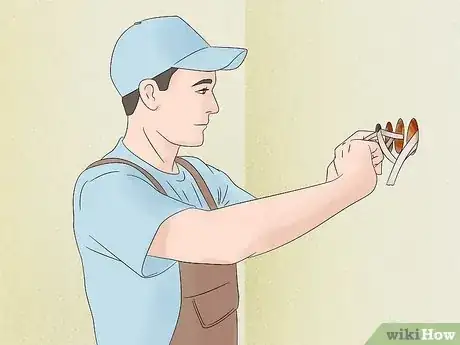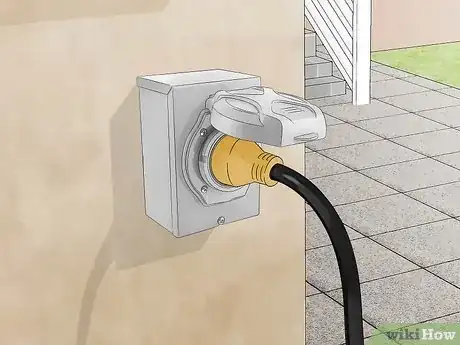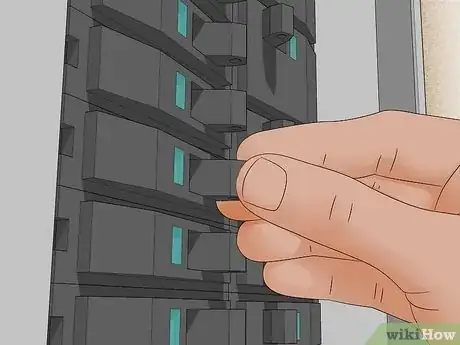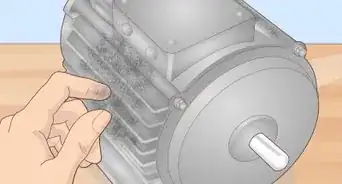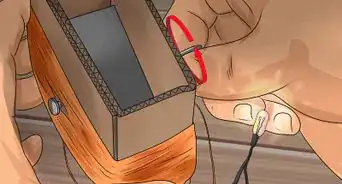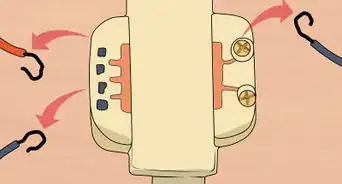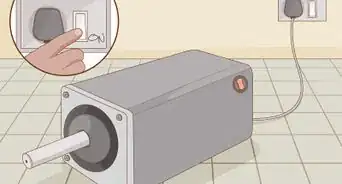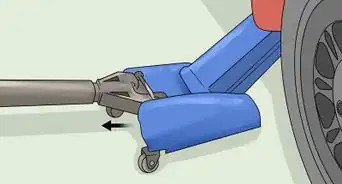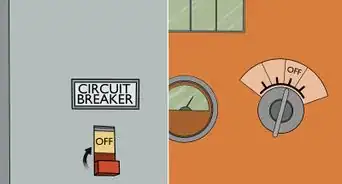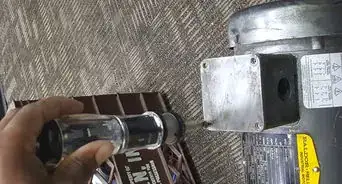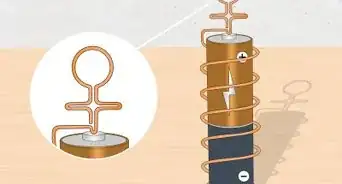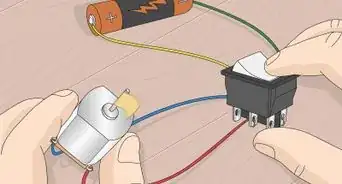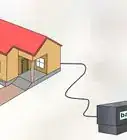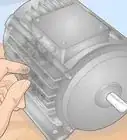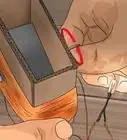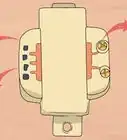This article was co-authored by Daniel Stoescu and by wikiHow staff writer, Savannah Vold. Daniel Stoescu is a Master Electrician and the Owner and Operator of Home Tech Solutions, LLC in Hampton, Virginia. With over a decade of experience, Daniel specializes in wiring residential, commercial, and light industrial structures. The Home Tech Solutions team has over four decades of combined experience and offers comprehensive solutions for residential electrical needs.
There are 12 references cited in this article, which can be found at the bottom of the page.
wikiHow marks an article as reader-approved once it receives enough positive feedback. This article has 13 testimonials from our readers, earning it our reader-approved status.
This article has been viewed 1,087,293 times.
Let’s face it, power outages are inconvenient and stressful. Thankfully, portable generators can provide emergency electrical power to a home when the main power source, or the national grid, goes out. Connecting a portable generator to a house can be tricky, but with our comprehensive guide, you’re in good hands. Read on to learn about the safest, most straightforward ways to connect a portable generator to your home, so you can rest easy knowing you’ve got backup for whatever comes your way!
Things You Should Know
- Opt for a manual transfer switch wiring system over an interlock kit. It must be installed professionally but is the safest, legal option.
- Install an inlet box hookup to the exterior of your home. Be sure to place the generator as far away from your house as possible while still being able to plug it in.
- Plug the generator into the inlet box and check it has enough oil. Turn it on and flip the breakers one by one to power your home.
Steps
Wiring the System
-
1Determine your essential appliances. Figure out what appliances you can’t live without, like lighting, medical equipment, fridges, etc. A petrol-driven generator with a rated power of about 3500W will serve for lighting, TV, fans, and a fridge or freezer. The rated power is usually written on the body of the generator and is the amount of power the generator can deliver continuously for an average of 12 hours on a single tank of fuel.[1]
- The power ratings of generators are typically expressed in Kilo Volt Amperes or KVA.
- Stoves, air conditioners, and tumble driers use too much power from a typical portable generator.
-
2List the electrical devices you plan to use and check their wattage. A typical microwave, for instance, uses 1500 watts, while a whole circuit of lights with CFL (compact fluorescent lamp) bulbs may only require 150 watts. Refrigerators use around 1200-1500 watts but have a starting capacitor that increases the wattage momentarily when the compressor starts. Televisions use less the 1000 watts depending on the type and size. A small room fan may use about 500 watts, and so on.Advertisement
-
3Choose a wiring system. Contact your local Department of Labor and Industries, Planning Department, or Power Company to learn about regulations, necessary permits, and the legal wiring system of your area. Don’t consult the internet to determine which system is legal in your area, as many unqualified sources offer inaccurate, unsafe advice. Wiring laws can vary significantly between countries, states, and even cities, making it that much more important to contact your local department first.[2]
- Several different wiring system options are used to connect a generator to a house, the two most popular wiring systems being the following:
- Manual transfer switch. This is a slightly more expensive piece of equipment requiring professional installation. However, it’s the only guaranteed legal option and the safest. A professional installation will keep you from accidentally electrocuting someone else or yourself and ensure your portable generator runs as best it can.
- Interlock kit: These are fairly simple to install and the cheapest option. However, they are illegal in many areas and can be very unsafe. Interlock kits must be installed with the utmost care and correctness. Additionally, safe installation requires that you have several extra spaces in your existing breaker box or that you install a new one, which must be done professionally. It is a strict requirement that you get a kit approved for your specific breaker box (the same company should make it).[3]
- Several different wiring system options are used to connect a generator to a house, the two most popular wiring systems being the following:
-
4Install an inlet box hookup. An inlet box hookup will go outside your house, have a recessed male connector (prongs that stick out rather than holes you plug into), and connect to whichever panel system you installed inside your house. A professional should install the inlet box to keep you safe and ensure your system remains up to code.[4]
- If you don't have this installed by a professional, your insurance may be unable to cover your home, the city you live in could enforce a heavy fine, and you are very likely to hurt either yourself or someone else (in a hospital-if-you're-lucky kind of way).
-
5Keep your family safe by checking with your city specialists. You’ll find plenty of inaccurate, dangerous advice and instructions on the internet that can put you at risk for injury, electrocution, or a fire. Always check with your city specialists before installing wiring and connecting your generator to determine the safest and most suitable method. Some common don’ts include:[5]
- Don’t connect your generator directly to your breaker box without an approved transfer switch.
- Don’t connect your generator to a washing machine or dryer outlet.
- Don’t run a generator in your home or garage.
- Don’t allow children or pets anywhere near your generator.
-
6Have your setup professionally inspected. A professional inspection is essential if you don’t have experience with electrical work. You want to be sure that your family stays safe and, in the event of a fire, that your insurance company cannot dispute your claim because of "faulty wiring."[6]
Plugging It In
-
1Place the generator at least 10 feet (3 m) away from your home. Place the generator as far away from your home as possible with the cable it comes with, or at a minimum of 10 feet (3 m). This is to prevent your home from catching fire should something go wrong with the generator and avoid carbon monoxide poisoning from the generator exhaust, which can be deadly.[7]
- Placing your generator at least 10 feet (3 m) away from your home is a critical and necessary safety precaution.
-
2Plug in your generator to the hookup. Match the holes at the end of the generator's cord to the prongs on your hookup. Then, plug it in. You’ll likely have to turn the plug (usually about 15 degrees) to complete the connection to your hookup.
-
3Plug your attachment cable into your generator. Your generator should have come with a cable to connect to your house. Plug it in, select which voltage you want (if you can), and do the same turn of the plug (about 15 degrees) that you did with the other end and the receptacle.[8]
- Never plug a generator directly into a wall outlet or your home’s wiring.
- Be sure to unplug and turn off all appliances before operating your generator.[9]
-
4Check the engine's oil level. Generators need oil to lubricate their running parts so they operate safely and efficiently. Check that the throttle for the engine is in the correct position according to your user's manual and that the engine has enough oil.[10]
- Add more oil according to your user's manual if needed.
- You may need to preheat the engine with the glow plug (a heating element that heats incoming fuel and air) if it’s under 32 degrees (0 C) where you live.
- Consult your user’s manual to learn how to properly operate the glow plug feature (if your generator has one).
-
5Start the engine and let it run for around 5 minutes. Start your generator's engine according to the manufacturer's instructions. Most generators will have an obvious "START" switch or key. Let your generator run for around 5 minutes to warm up before switching the systems and flipping the breakers.[11]
- Never start or stop the generator with other electrical devices plugged into the same socket.
-
6Switch from the utility main to the generator main. Go to your breaker. Then, flip off the utility main and turn on the generator main. You're almost ready for action![12]
-
7Flip the breakers. Flip the breakers on the system you installed, slowly turning on all the loads one by one. Your portable generator should now be running electricity into your home. Great job![13]
-
8Return to utility power when you’re done using your generator. To return to utility power, reverse the order of operations by flipping the circuit breakers one by one to the “OFF” position. Then, turn your generator off by flipping its switch or key into the proper “OFF” position.[14]
- Always turn off and unplug any appliances your generator is powering before turning it off.
Community Q&A
-
QuestionWhat appliances and lighting should I connect to my transfer switch?
 wikiHow Staff EditorThis answer was written by one of our trained team of researchers who validated it for accuracy and comprehensiveness.
wikiHow Staff EditorThis answer was written by one of our trained team of researchers who validated it for accuracy and comprehensiveness.
Staff Answer wikiHow Staff EditorStaff AnswerAppliances and lighting should only be connected to your transfer switch or generator once the generator is up and running. Once that's been done, determine which appliances you can't live without, like the fridge, fans, etc., and check their wattage. If the total amount is in the capacity of power the generator can supply, you're all set to go.
wikiHow Staff EditorStaff AnswerAppliances and lighting should only be connected to your transfer switch or generator once the generator is up and running. Once that's been done, determine which appliances you can't live without, like the fridge, fans, etc., and check their wattage. If the total amount is in the capacity of power the generator can supply, you're all set to go. -
QuestionMy generator specifically says do not use a transfer switch. Any ideas?
 wikiHow Staff EditorThis answer was written by one of our trained team of researchers who validated it for accuracy and comprehensiveness.
wikiHow Staff EditorThis answer was written by one of our trained team of researchers who validated it for accuracy and comprehensiveness.
Staff Answer wikiHow Staff EditorStaff AnswerConsult your generator's manual or contact the company that makes it directly to learn what wiring method is preferred for your specific make and model. That way, you can rest easy knowing you've selected the safest option.
wikiHow Staff EditorStaff AnswerConsult your generator's manual or contact the company that makes it directly to learn what wiring method is preferred for your specific make and model. That way, you can rest easy knowing you've selected the safest option. -
QuestionI live in a mobile home behind my son's house, upfront. I am wired for electricity from my son's house. I have my own breaker box. Can I install a generator and transfer switch for power outages?
 wikiHow Staff EditorThis answer was written by one of our trained team of researchers who validated it for accuracy and comprehensiveness.
wikiHow Staff EditorThis answer was written by one of our trained team of researchers who validated it for accuracy and comprehensiveness.
Staff Answer wikiHow Staff EditorStaff AnswerThe best way to find out would be to contact your local Department of Labor and Industries, Planning Department, or Power Company to learn whether or not this is legal in your area. They may also provide personalized advice on whether this is possible/how best it can be done. That way, you get the safest, legal answer.
wikiHow Staff EditorStaff AnswerThe best way to find out would be to contact your local Department of Labor and Industries, Planning Department, or Power Company to learn whether or not this is legal in your area. They may also provide personalized advice on whether this is possible/how best it can be done. That way, you get the safest, legal answer.
Warnings
- Electrical work is hazardous. While you may want to do the electrical work yourself, contacting a professional is best.⧼thumbs_response⧽
- Improperly installed generators can lead to fire, carbon monoxide poisoning, and even death. Protect yourself, your family, and your community by having your system professionally installed and/or inspected.⧼thumbs_response⧽
References
- ↑ http://engineering.electrical-equipment.org/electrical-distribution/generator-ratings-back-to-basics-2.html
- ↑ https://ww2.arb.ca.gov/resources/fact-sheets/carb-regulations-allow-use-back-generators-during-public-safety-power-shutoff
- ↑ https://interlockkit.com/wp-content/uploads/2021/05/Instructions_K-9410_2012.pdf
- ↑ https://www.todayshomeowner.com/video/how-to-setup-a-generator-to-provide-power-for-your-home/
- ↑ https://safeelectricity.org/public-education/tips/generator-safety/
- ↑ http://www.aqmd.gov/home/permits/emergency-generators
- ↑ https://www.nh.gov/safety/divisions/firesafety/bulletins/documents/2009-05ResidentialGeneratorSafety.pdf
- ↑ https://www.costcobusinessdelivery.com/wcsstore/CostcoUSBDCatalogAssetStore/pdf/1900555.pdf
- ↑ https://www.canr.msu.edu/news/learn_how_to_safety_install_and_operate_a_generator_during_power_outages
- ↑ https://cdn.powerequipment.honda.com/pe/pdf/manuals/00X31Z446010.pdfl
- ↑ https://cdn.powerequipment.honda.com/pe/pdf/manuals/00X31Z446010.pdf
- ↑ https://www.osha.gov/sites/default/files/publications/OSHA3286.pdf
- ↑ https://www.osha.gov/sites/default/files/publications/OSHA3286.pdf
- ↑ https://www.canr.msu.edu/news/learn_how_to_safety_install_and_operate_a_generator_during_power_outages
About This Article
Before connecting a portable generator to your house, place the generator as far away from your home as you can to prevent fire or carbon monoxide poisoning. Then, plug the generator into the hookup on your house. Before you turn the system on, check that the throttle for the engine is in the correct position and that the engine has enough oil. Once the generator is running, go to your breaker, turn off the switch for the utility main, and turn on the switch for the generator main. Next, flip the breakers on the system that you installed one by one. For information about the installing the generator hookup for your house, read on!

